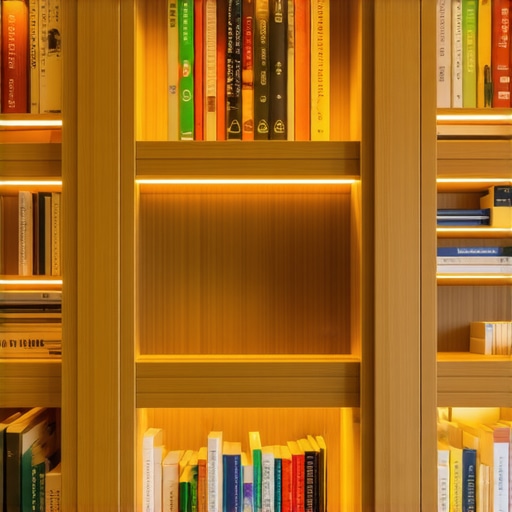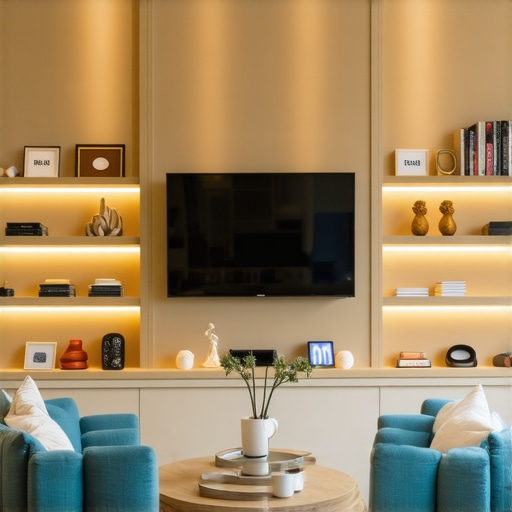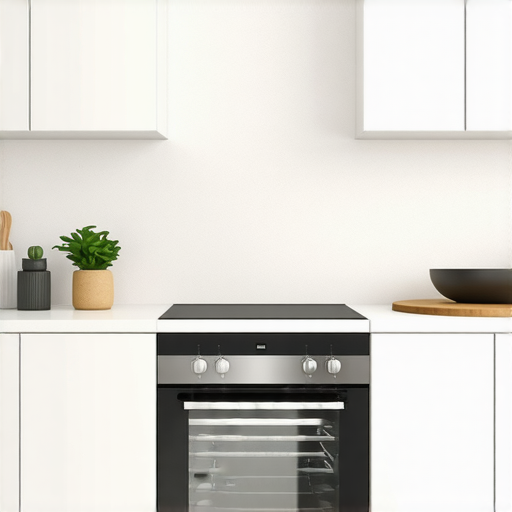My Journey with Built-ins: Transforming My Living Room into a Personal Sanctuary
Ever since I moved into my apartment, I knew I wanted my living room to be more than just a space for lounging; I envisioned it as a reflection of my personality and a hub of functionality. One of the game-changers for me was incorporating built-ins that elevate your living room’s functionality. These tailored solutions not only maximize space but also add a unique charm that off-the-shelf furniture simply can’t match.
Why Built-ins Became My Favorite Home Improvement Hack
Initially, I was skeptical about investing in custom features, but after experiencing the clutter and limited storage options with traditional furniture, I decided to explore built-in options. The transformation was remarkable. I opted for a custom bookshelf that spans an entire wall, doubling as a display area for my favorite books and keepsakes. The seamless integration of storage and decor made my living room feel more inviting and organized.
Personalizing Your Space with Smart Storage Solutions
One aspect I love about built-ins is how versatile they are. I integrated hidden compartments for remote controls and chargers, which keeps my space tidy without sacrificing style. For those with smaller spaces, smart storage solutions for small kitchens in 2025 offer insights into optimizing limited areas, and I found these principles applicable even in my living room. The key is to choose solutions that blend aesthetics with practicality, like floating shelves or recessed cabinets, which I explored through resources like Houzz.
How Do Built-ins Enhance Home Value and Aesthetic Appeal?
From my experience, built-ins significantly boost the aesthetic appeal of any room. They create a cohesive look that complements your existing decor. Moreover, they can increase your home’s value by adding functional, high-end features that appeal to future buyers. I’ve noticed that well-designed built-ins are often highlighted in modern kitchen remodels featuring custom cabinets and built-ins, which you can explore further at HGTV.
What Should I Consider Before Installing Built-ins in My Living Room?
Thinking about adding built-ins? Consider your specific needs, the style of your existing decor, and the space available. Consulting with a professional can help you design solutions that are both beautiful and functional. Personally, I found that planning carefully saved me time and money during installation. Remember, built-ins are an investment in your home’s comfort and charm.
If you’ve enjoyed my story, I’d love to hear your experiences or ideas about built-ins. Feel free to share your thoughts or ask questions in the comments below!
Optimizing Storage with Hidden and Multi-functional Elements
Another advantage of built-ins is their ability to incorporate hidden or multi-purpose features, which is a hallmark of expert interior design. For example, I included a pull-out desk within my bookshelf unit, creating a compact workspace that disappears when not in use. This is especially beneficial for those working from home or needing a dedicated area for hobbies, as it maintains a clean and uncluttered aesthetic. Such solutions exemplify the principle of maximizing space without sacrificing style, aligning with innovative storage ideas discussed in Maximize Space with Innovative Storage Solutions for Every Room.
How Can Custom Cabinets and Built-ins Work Harmoniously in Different Decor Styles?
One common concern is whether built-ins can blend seamlessly with various interior styles—from minimalist to rustic. The answer is yes, but it requires thoughtful design choices. For instance, sleek, flat-panel built-ins with a matte finish complement modern or contemporary interiors, while distressed wood or ornate moldings work well in traditional or rustic settings. I experimented with different finishes and hardware to ensure harmony with my existing decor, and I recommend exploring Houzz for inspiration on integrating custom cabinets ideas that transform your home’s style. The key is to select materials and design details that reinforce your overall aesthetic.

What Are the Key Factors to Consider When Planning Built-ins for Different Rooms?
Planning built-ins involves assessing the specific function and traffic flow of each room. For instance, in a living room, focus on creating a balanced mix of storage and display areas, while in a bedroom, consider integrating closet systems with tailored shelving. The depth, height, and accessibility of each feature should match the room’s use. Collaborating with a professional designer can help tailor solutions that are both practical and visually appealing, ensuring that your investment enhances your home’s overall value and comfort. For further insights, see the article on Modern Kitchen Remodels Featuring Custom Cabinets and Built-ins.
How Do Built-ins Influence the Future Flexibility of Your Home?
Built-ins are not only about aesthetics—they can also future-proof your home by providing adaptable spaces. For example, modular components and adjustable shelving allow for changing needs over time, whether accommodating a growing family or shifting hobbies. Additionally, integrating smart technology, such as automated lighting or hidden charging stations, can make your built-ins more functional and aligned with smart home trends. This flexibility is crucial in a rapidly evolving housing market, where adaptable spaces are increasingly desirable. If you’re interested in further exploring how to maximize space with innovative storage solutions for every room, check out the detailed strategies available in the linked resources.
Beyond Aesthetics: How Built-ins Reflect Personal Growth and Evolving Tastes
When I first installed built-ins in my living room, I was primarily motivated by the desire for better organization and a sleek look. Over time, I realized that these features also became a mirror of my personal growth and shifting tastes. For example, I initially chose a modern, minimalist design with clean lines and neutral colors, which complemented my then-current aesthetic. As my interests evolved—perhaps my passion for vintage decor or eco-friendly materials—I found myself rethinking those built-ins, exploring options to incorporate reclaimed wood or artisanal hardware. This journey underscores how built-ins are not just fixed fixtures but adaptable elements that can evolve along with you, reflecting your changing identity and lifestyle.
Beyond Aesthetic Boundaries: How Built-ins Foster Personal Expression and Adaptive Living Spaces
Over time, I discovered that built-ins serve as more than mere storage solutions; they are platforms for personal expression and adaptive functionality. For instance, I integrated bespoke lighting within my shelves, allowing me to set different moods and highlight my collections, which reflects my evolving tastes and enhances the ambiance. This aligns with insights from interior design innovators who emphasize the importance of personalized ambiance, as discussed in Architectural Digest. Such features transform a static piece of furniture into a dynamic part of my daily life, capable of adapting to various occasions and moods.
Innovative Design Strategies for Seamless Integration of Built-ins in Diverse Architectural Styles
Designing built-ins that harmonize with diverse architectural styles requires an understanding of nuanced design principles. For example, in my rustic-inspired apartment, I opted for reclaimed wood with artisanal finishes to evoke warmth and authenticity. Conversely, for a sleek modern aesthetic, I chose high-gloss lacquered surfaces with integrated LED lighting for a clean, minimalist look. The challenge lies in balancing form and function—ensuring that built-ins complement existing architectural elements without overpowering them. My approach involved collaborating closely with a skilled designer who specialized in adaptive integration, which proved invaluable in achieving a cohesive look. For inspiration, I frequently consult resources like Houzz, which offers a wealth of examples on blending custom cabinetry with various design themes.

How Can I Future-Proof My Built-ins Against Changing Needs and Technologies?
Future-proofing built-ins involves designing with flexibility and technological integration in mind. Modular components, such as adjustable shelving and removable panels, enable easy reconfigurations as your needs evolve, whether accommodating new hobbies or changing family sizes. Incorporating smart home technology—like automated lighting, integrated charging stations, or voice-controlled systems—can significantly enhance functionality. For instance, I embedded a hidden charging dock within my bookshelf, which seamlessly blends into the design but offers advanced utility. According to experts in smart interior design, such foresight not only maximizes current use but also preserves the investment in your space. To explore this further, you might consider resources like Maximize Space with Innovative Storage Solutions for Every Room.
How Do Built-ins Evolve Alongside Personal Growth and Changing Lifestyle Priorities?
Built-ins are uniquely positioned to reflect and adapt to personal growth. When I initially installed my shelving, I chose a neutral, modern aesthetic. Over the years, as my interests shifted towards vintage collectibles and eco-friendly materials, I reimagined my built-ins by incorporating reclaimed wood panels and artisanal hardware, which added character and sustainability. This evolution demonstrates that built-ins are not static fixtures but adaptable elements that can be tailored over time, mirroring one’s personal journey. This perspective aligns with research from interior design thought leaders who emphasize sustainable, adaptable architecture as a cornerstone of modern living. If you’re interested in how to incorporate sustainable materials into your built-ins, I recommend exploring Houzz for inspiring ideas and case studies.
Things I Wish I Knew Earlier (or You Might Find Surprising)
Customization Is Worth the Effort
Initially, I underestimated how much a custom-built-in could transform a space. Investing time and money into tailor-made solutions truly paid off, creating a seamless look and maximum functionality.
Balance Between Style and Practicality
It’s tempting to focus solely on aesthetics, but I found that integrating hidden compartments and multi-purpose features made my built-ins more useful without sacrificing design.
Planning Ahead Saves Money
Thinking about future needs and potential upgrades from the start prevented costly modifications down the line, especially as my tastes and requirements evolved.
Materials Matter More Than You Expect
Choosing durable, high-quality materials not only enhances the appearance but also ensures longevity, saving me from frequent repairs or replacements.
Don’t Underestimate Small Details
Hardware, finishes, and lighting can dramatically change the overall feel. Paying attention to these small details made my built-ins truly stand out.
Resources I’ve Come to Trust Over Time
- Houzz: This site has been my go-to for inspiration and practical ideas on custom cabinetry and styling, offering countless real-life examples.
- HGTV: Their articles and videos helped me understand the latest trends in built-in designs and how to incorporate them into different decor styles.
- Architectural Digest: The insights on personalized interiors and innovative design strategies have been invaluable for my projects.
- Maximize Space with Innovative Storage Solutions for Every Room: A resource I frequently revisit for tips on smart storage ideas adaptable to any space.
Parting Thoughts from My Perspective
Reflecting on my experience, I can confidently say that built-ins have been a game-changer for my living room, turning it into a true personal sanctuary. They offer a perfect blend of style, function, and adaptability—qualities I believe are essential for creating a space that truly feels like home. If you’re considering adding built-ins to your space, my advice is to plan carefully, choose quality materials, and think about how your needs might evolve over time. This way, your built-ins will serve you well for years to come. If this story resonated with you, I’d love to hear your thoughts or experiences—feel free to share in the comments or pass this along to someone who might find it helpful.
